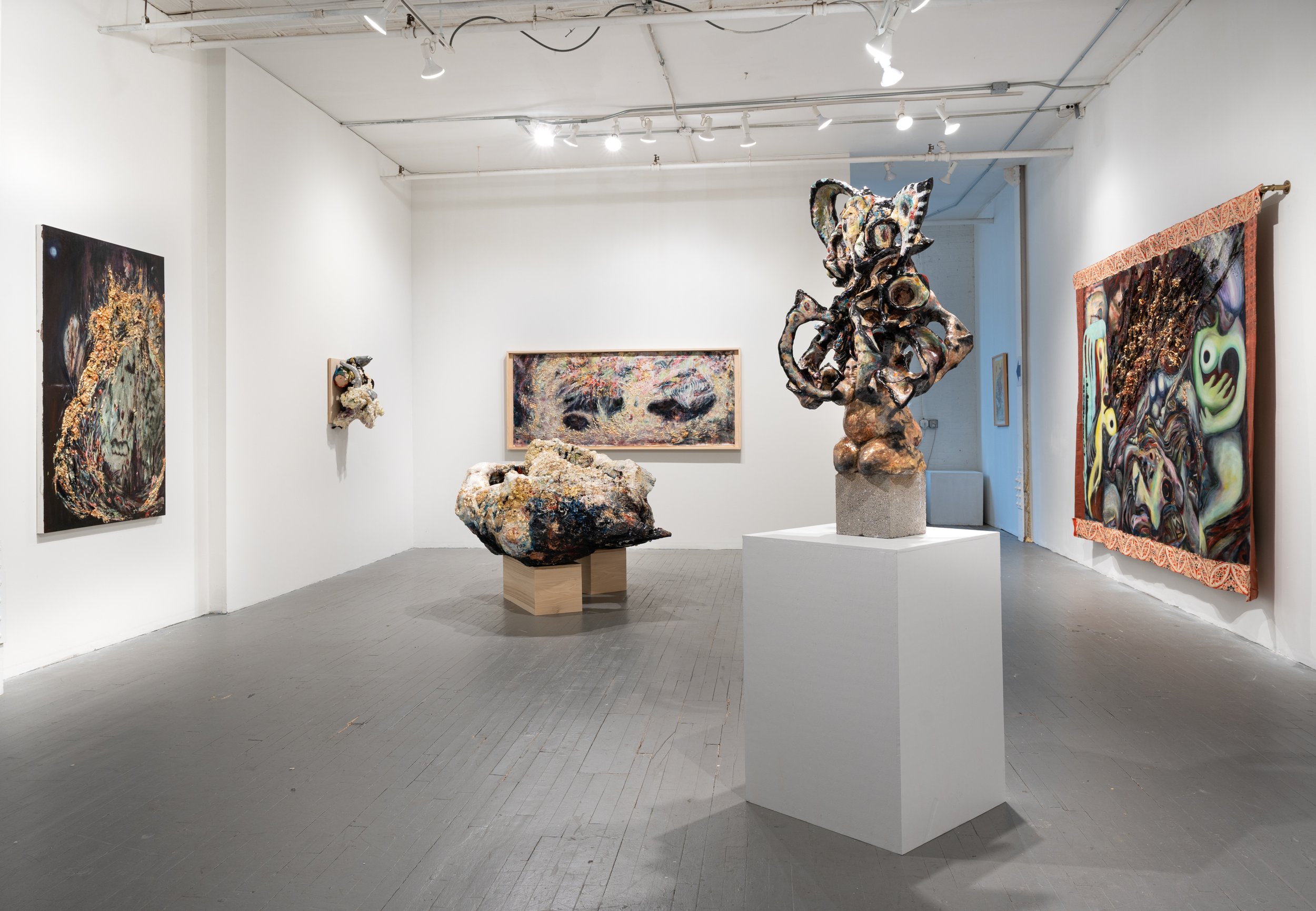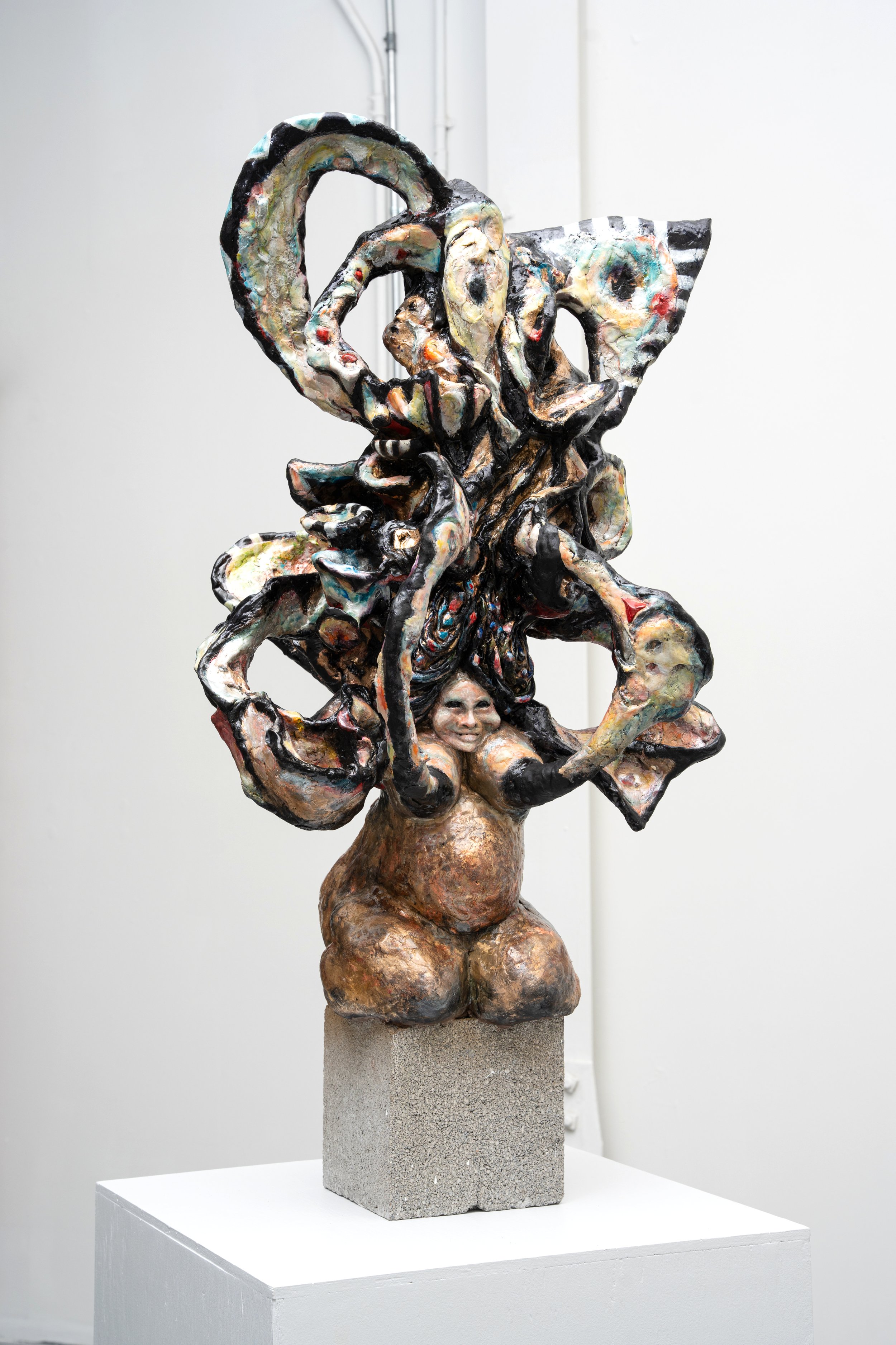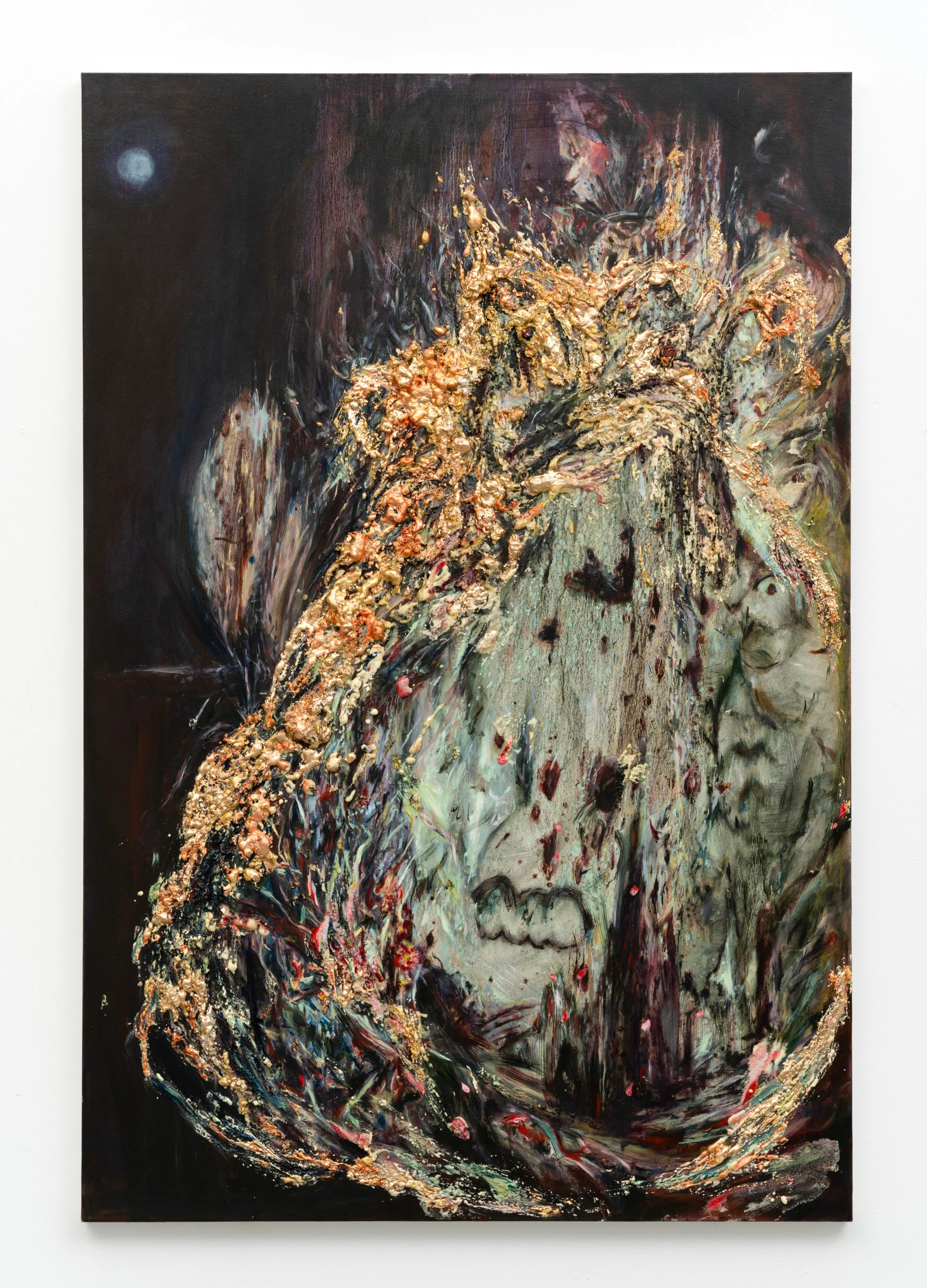Light Through the Darkness
Kahori Kamiya at Amos Eno
Installation view of the exhibition under review. Image courtesy of the artist.
Japanese-born artist Kahori Kamiya harkens back to ancient spirituality and philosophy for inspiration in her exhibition Long Eclipse, titled for the prolonged period of uncertainty during the COVID-19 pandemic and the sense of a new dawn on the horizon. The exhibition, filled with mixed media paintings and sculptures, encapsulates the fears and hopes of being a mother and a Japanese woman in a time of increased racism against the Asian community. Kamiya’s practice is based on personal experience and memories, but through ancient Japanese symbols and the tenets of Buddhism, her art touches even the most cynical of viewers. As a resident of New York for the past seventeen years, time has not dampened Kamiya’s ability to transport the viewer back in history while still remaining relevant in today’s world.
Blooming Flow, 2022. Clay, acrylic, metal leaf, cinder block, amethyst, 44 x 23 x 22 in. Image courtesy of the artist.
Samsāra, the eternal cycle of transmigration in Hindu and Buddhist thought, is the belief that life never ends but is, rather, transformed. A variation on this theme can be seen throughout Kamiya’s exhibition. Motherhood, the painful act of giving life to another; breastfeeding and nurturing a vulnerable life; and death and the process of reincarnation are all symbols of enlightenment after suffering. Messages of new beginnings, rebirth, and healing resonate throughout this body of work. After sitting down with the artist, the meaning behind her work became clear. This exhibition is about the duality of life and death, trauma and healing: “Through this exhibition, I created a hope behind the darkness.”[i]
Arrival, 2023. Oil, foam, metal leaf, crystals on canvas, 60 x 40 in. Image courtesy of the artist.
Layers of meaning are embedded in every material and technique Kamiya employs, each work being “layered with the history of humankind.”[ii] Her application of gold leaf comes from a fifteenth-century practice, kintsugi, in which broken pieces of pottery were reassembled with gold filling the cracks. Instead of hiding the repairs, the golden adhesive is not only visible, but gives the object a new, transformed life. Gold is used throughout Kamiya’s work as a philosophical practice rather than a practical one, representing healing and rebirth. In Arrival (2023), a large ring of gold leaf separates the light from the dark, protecting it in an embryonic sac: not unlike the figure seen in Cave Time (2022).
Long Eclipse, 2023. Oil paint, metal leaf, foam, resin, feather, fabric, linen, 72 inches x 120 in. Image courtesy of the artist.
The titular work of the exhibition, Long Eclipse (2023), is a thought-provoking and absorbing tapestry painting. Two large female figures bracket the painting, creating a visual conversation that represents the confusion and misunderstanding rampant during the pandemic. A mass of people and body parts converge between these two opposing figures, reinforcing the divide created by separation. Handfuls of peacock feathers covered in gold leaf are placed above the anonymous bodies as if healing the rift in the community. The woman on the right, terrified and masked, holds a baby to her breast. The woman to the left, however, is unmasked and has a peacock feather for an eye. For Kamiya the feather represents an all-seeing eye — judgmental, and scrutinizing — while at the same time symbolizing immortality, prosperity, and a link to the spiritual world.
Front: I have been waiting for you, 2023. Clay, plaster, acrylic, foam, raisin, fabric, metal leaf, amethyst, 60 x 48 x 52 in. Back : Bloom / Falling, 2023. Acrylic, metal leaf, crystal, foam on paper, 38 x 84 in. Image courtesy of the artist.
The mixed media sculpture I Have Been Waiting for You (2023) is perhaps the most impressive work in the exhibition. In terms of media, it is both a sculptural painting and a painted sculpture, with both approaches defying traditional norms of fine art. At the same time, the work pays tribute to the oldest form of art: cave painting. As the viewer walks around the clay and plaster sculpture, one might see faces and figures in the deep caverns that traverse the work. These figures represent oni or demons from Buddhist teachings. Combining oni with animism, Kamiya transforms these figures into spirits. Neither good nor evil, they represent the spiritual essence of the natural world.
Detail of I have been waiting for you. Image courtesy of the artist.
Mixing Japanese folklore, animism, shamanism rooted in the ancient religion of Shinto, and the experience of motherhood, Kamiya creates an atmosphere of healing — a healing that can only come after suffering. As the artist moves through the spaces and layers of influence, she produces something out of the ordinary in this modern day, something we all need: enlightenment. To be in the same room as one of Kamiya’s works is a visceral experience in which a palpable healing energy intersects with the artist’s experiences of life and motherhood. Kamiya's exhibition allows the viewer to experience hope and resolution after enduring the depth of collective and personal trauma.
Kahori Kamiya: Long Eclipse
March 2 to 26, 2022
Amos Eno Gallery
56 Bogart St. Brooklyn NY 11206
[i] Kahori Kamiya, in a conversation with the author on February 28, 2023
[ii] Ibid.






